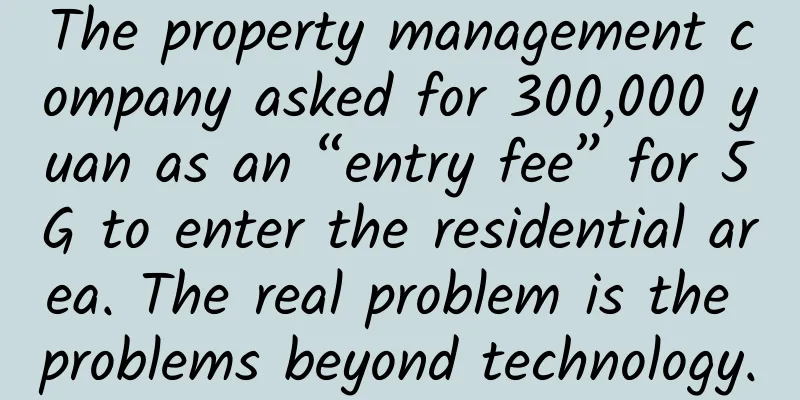KT is forced to use "Korean speed" to make Gigabit "run" on copper cables

|
Korea Telecom is using GIGA Wire 2.0 technology to provide gigabit services to users based on existing copper lines, which is undoubtedly good news for users of old houses. Moreover, Korea Telecom intends to "export" this technology to overseas markets. "Korean users don't really care about the network speed, but are more concerned about whether the traffic will reach the upper limit, because the network speed is already fast enough that it will not affect the use. Korean users think that communication fees are not expensive, and the average monthly communication fee for young people is 33,000-35,000 won (about RMB 192-203)." After communicating with many Korean users, the reporter felt a little "envious and jealous". In this country with the fastest Internet speed in the world, the communication market is fully competitive. By 2015, Korean home broadband has basically achieved full coverage, with an average speed of 22.2Mbps, 5.6 times the world average. Speed up the process of getting out of the price war After 2010, South Korean operators as a whole fell into trouble, and user growth stagnated. In order to compete for customers, operators fought fiercely in price wars, but continuous subsidies did not increase user value, but instead put operators into a vicious cycle. How to get out of the quagmire of price war? As the largest operator in South Korea, Korea Telecom (KT) has taken the measure of "speeding up". In September 2014, Korea Telecom (KT) launched Korea's first nationwide gigabit broadband service "GIGA Internet service". Prior to this, KT's 100M broadband had been "in service" for 7 years (launched in 2007). After the launch of the "GIGA Internet service", users in the fiber-optic coverage area can enjoy a speed of 1Gpbs, while those living in old apartments with only telephone lines can enjoy a maximum speed of 500Mbps. Seeing that Korea Telecom launched the gigabit broadband service, the other two operators, SK Telecom and LG U+, quickly followed suit and launched gigabit broadband services one after another within two months. KT was under great pressure to promote gigabit broadband services nationwide. "Market research at the time showed that only 5% of users would accept it," said Kang Kook-hyun, executive vice president of KT's marketing department. However, judging from the actual market reaction, the situation is not bad. The promotion of gigabit broadband services has helped Korea Telecom to get out of the trough. In December 2014, two months after KT launched the gigabit broadband service, its gigabit broadband users reached 100,000. By December 2015, KT's gigabit broadband users had reached 1 million. At the same time, the gigabit broadband service also added a lot of color to Korea Telecom's financial report. In the third quarter of 2015, Korea Telecom's Internet business revenue began to rise, and Korea Telecom attributed this to gigabit broadband. By the third quarter of this year, Korea Telecom's gigabit broadband users had reached 2 million, and the proportion of gigabit broadband users had increased to 24.1%. In the third quarter of last year, the proportion of gigabit users was only 7.9%. It took 14 months to grow from zero to 1 million, and 9 months to grow from 1 million to 2 million. The accelerated development of gigabit broadband has given Korea Telecom a boost. It was mentioned earlier that Korean users are not sensitive to prices, and there is a reason for this, because the high-speed broadband package prices of the three operators are almost exactly the same, with 1G network service charging US$33 (about RMB 229) per month and 500M network service charging US$28 (about RMB 194) per month. In order to seek differentiation, South Korea aggressively launched a family bundling strategy, where as long as there are two mobile users of Korea Telecom in the family, the whole family can use the 500M broadband service for free. Unexpectedly, LG U+ followed up with this strategy. To achieve Gigabit speeds over copper cables Now, Korea Telecom will expand its gigabit broadband network coverage. According to Korean media reports, Korea Telecom will make the coverage of gigabit broadband in old apartments and houses reach 95% in 2017. To this end, Korea Telecom will use its unique technology called GIGA Wire 2.0 to provide gigabit services to users through existing copper telephone lines. Once this plan is completed, about 9 million Korean residents will be able to use high-speed wired Internet services. In this plan of Korea Telecom, GIGA Wire 2.0 will play a vital role. In fact, Korea Telecom has been researching GIGA Wire technology for many years. Previously, using this technology, Korea Telecom could increase the network speed based on copper cables to 300M. Now GIGA Wire 2.0 can increase the maximum network speed based on copper cables from 300M to 1G. Korea Telecom not only wants to apply this technology domestically, but also hopes to "export" it to overseas markets. In October this year, at the Broadband World Forum (BBWF) held in London, Korea Telecom demonstrated GIGA Wire technology, with a maximum speed of 1.4Gbps. This can solve the urgent needs of some European operators. According to Korea Telecom, some European countries are now showing great interest in its GIGA Wire technology, because the communication facilities in these countries are generally old and the cost of large-scale fiber optic network construction is too high. It is reported that Korea Telecom's GIGA Wire technology is being tested in Spain, and an agreement was signed in March this year to provide this technology to Turkey. Korea Telecom is also promoting its copper cable gigabit technology in the Asian and American markets. Make Gigabit Broadband Create More Value IPTV is the "killer application" of high-speed broadband. Within a year after the launch of Gigabit broadband, Korea Telecom has "captured" the hearts of 400,000 users with its ultra-high-definition IPTV service. IPTV is the main battlefield for competition among the three major operators in Korea. KT has the largest number of IPTV users, almost 1.8 times that of SK. But this era does not need unicorns, but octopuses, which can fully realize the user value. Korea Telecom's gigabit broadband service has extended several tentacles: Internet video, Internet of Things and ICT. In particular, the Internet of Things has been considered to be another killer application after IPTV. When the iPhone was launched, only 1% of mobile users were using smartphones, and the Internet of Things was still in its infancy. However, the Korean communications industry optimistically estimated that the size of the Internet of Things market would see rapid growth, increasing from 2.3 trillion in 2013 to 30 trillion in 2020, nearly 13 times. Last June, the UK Intellectual Property Office analyzed global IoT patent technologies from 2003 to 2013 and released a report stating that Silicon Valley is lagging behind, while China, Japan and South Korea are in the leading position in Asia. Korea Telecom has established the GiGA IoT (Gigabit Internet of Things) Alliance with more than 300 companies, including Chinese companies such as ZTE, and KT China has also made Sino-Korean IoT business cooperation a priority. We can imagine a blueprint: when we drive our beloved cars on the road, the images recorded by the dashcam will be transmitted to the insurance company in real time. Once the car encounters an emergency such as a scratch or a flat tire, the insurance company can help you solve the problem in the first time. The LED street light next to it is actually an invisible monitoring system. It will notify the police in the first time: a traffic accident has occurred here, requesting road support. Then, users don’t have to make one phone call after another. In fact, Korea Telecom has cooperated with Korea Automobile and Ganghwa County’s LED street lights and other projects to create a car network based on a gigabit network, which has been able to turn this blueprint into reality. For the home user group, Korea Telecom completed the construction of a nationwide narrow broadband Internet of Things (NB-IoT) network at the end of 2016, providing home users with smart home, monitoring and remote control services. NB-IoT has a wider coverage and faster network speed than LTE-M network, which is more than 10 times faster than the latter. It is reported that the IoT revenue brought by the five major industries of smart energy, integrated security, connected transportation, next-generation media and life health has accounted for 5% of Korea Telecom's total revenue. |
<<: Gigabit broadband: speed for speed’s sake?
Recommend
The battle between local deployment and cloud-managed WLAN architecture
Enterprises that need to upgrade their traditiona...
From 2G to 5G, three changes in the discourse power of mobile Internet
[[256146]] Hans Vestberg, CEO of Verizon, the lar...
If 12345G were in a WeChat group, what would they talk about?
[[269676]] Scene 1 The development and rise and f...
How awesome is the next-generation camera polished by the Virgo Huawei technical team? A favorite for detail lovers!
[51CTO.com original article] Can cameras also tak...
QuantumCore: Australian VPS 1 AUD per month for the first three months, 1G memory/30G NVMe hard drive/1TB monthly traffic
The tribe once shared information about QuantumCo...
"Intelligent Ecosystem to Open the Future with Data" ——2021 China Digital Ecosystem Heroes Conference was grandly held
On May 8, the "2021 China Digital Ecosystem ...
4G packages can also connect to 5G networks: but the speed is only slightly faster
5G has been popular in China for some time. The f...
Do you understand the benefits of 5G? Learn about the pros and cons
We talk about 5G every day, but do you know what ...
Three-minute review! A quick overview of 5G industry development trends in October 2021
After the rapid development in 2020, 2021 is a cr...
One can learn from others’ experience: How should the radio and television 5G core network be deployed?
In 2019, China Radio and Television, together wit...
Talk about my operating system and daily application software
operating system Manjaro is a distribution based ...
Learn about FTP/FTPS/SFTP file transfer protocols in one article
Introduction to FTP FTP (File Transfer Protocol) ...
HTTP interview, 99% of interviewers like to ask these questions
[[322727]] Differences between HTTP and HTTPS HTT...
What exactly is 5G Open RAN?
Traditionally, the proprietary network equipment ...
Cloud services are becoming the dominant force in enterprise network traffic
Cloud services are accounting for an increasing p...








![[11.11] Justhost offers a 30% discount for a limited time, with 22 data centers available in Russia, the United States, Singapore, etc.](/upload/images/67cabd1277b6f.webp)
